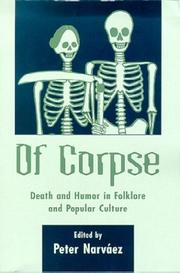| Listing 1 - 8 of 8 |
Sort by
|
Image
Year: 1579 Publisher: Fayerabend
Abstract | Keywords | Export | Availability | Bookmark
 Loading...
Loading...Choose an application
- Reference Manager
- EndNote
- RefWorks (Direct export to RefWorks)
Terminally ill --- Costume --- Bedrooms --- 1550-1600 --- German
Book
ISBN: 9781770460911 1770460918 Year: 2012 Publisher: Montreal Drawn & Quarterly
Abstract | Keywords | Export | Availability | Bookmark
 Loading...
Loading...Choose an application
- Reference Manager
- EndNote
- RefWorks (Direct export to RefWorks)
"In this collection of letters, drawings, and photos, Anders Nilsen chronicles a six-year relationship and the illness that brought it to an end. Don't Go Where I Can't Follow is an eloquent appreciation of the time the author shared with his fiancée, Cheryl Weaver. The story is told using artifacts of the couple's life together, including early love notes, simple and poetic postcards, tales of their travels in written and comics form, journal entries, and drawings done in the hospital in her final days. It concludes with a beautifully rendered account of Weaver's memorial that Glen David Gold, writing in the Los Angeles Times, called '16 panels of beauty and grace.' Don't Go Where I Can't Follow is a deeply personal romance, and a universal reminder of our mortality and the significance of the relationships we build"--From publisher's website.
Terminally Ill --- Neoplasms --- Hodgkin Disease --- Spouses --- Cartoonists --- Cancer --- Man-woman relationships --- Terminally ill --- Patients --- Family relationships --- United States.

ISBN: 0874215595 9780874214815 9786613267047 1283267047 0874214815 9780874214819 9780874215595 9781283267045 Year: 2003 Publisher: University Press of Colorado
Abstract | Keywords | Export | Availability | Bookmark
 Loading...
Loading...Choose an application
- Reference Manager
- EndNote
- RefWorks (Direct export to RefWorks)
Laughter, contemporary theory suggests, is often aggressive in some manner and may be prompted by a sudden perception of incongruity combined with memories of past emotional experience. Given this importance of the past to our recognition of the comic, it follows that some ""traditions"" dispose us to ludic responses. The studies in Of Corpse: Death and Humor in Folklore and Popular Culture examine specific interactions of text (jokes, poetry, epitaphs, iconography, film drama) and social context (wakes, festivals, disasters) that shape and generate laughter. Uniquely, however,
Death. --- Death --- Anthropology --- Social Sciences --- Folklore --- Dying --- End of life --- Life --- Terminal care --- Terminally ill --- Thanatology --- Philosophy
Book
ISBN: 1943208115 1943208107 9781943208111 9781943208104 Year: 2018 Publisher: Amherst College Press
Abstract | Keywords | Export | Availability | Bookmark
 Loading...
Loading...Choose an application
- Reference Manager
- EndNote
- RefWorks (Direct export to RefWorks)
The human body is the locus of meaning, personhood, and our sense of the possibility of sanctity. The desecration of the human corpse is a matter of universal revulsion, taboo in virtually all human cultures. Not least for this reason, the unburied corpse quickly becomes a focal point of political salience, on the one hand seeming to express the contempt of state power toward the basic claims of human dignity--while on the other hand simultaneously bringing into question the very legitimacy of that power. In Unburied Bodies: Subversive Corpses and the Authority of the Dead, James Martel surveys the power of the body left unburied to motivate resistance, to bring forth a radically new form of agency, and to undercut the authority claims made by state power. Ranging across time and space from the battlefields of ancient Thebes to the streets of Ferguson, Missouri, and taking in perspectives from such writers as Sophocles, Machiavelli, Walter Benjamin, Hannah Arendt, James Baldwin, Judith Butler, Thomas Lacqueur, and Bonnie Honig, Martel asks why the presence of the abandoned corpse can be seen by both authorities and protesters as a source of power, and how those who have been abandoned or marginalized by structures of authority can find in a lifeless body fellow accomplices in their aspirations for dignity and humanity.
Society & culture: general --- Dead --- Death --- Social aspects. --- Political aspects. --- Dying --- End of life --- Life --- Terminal care --- Terminally ill --- Thanatology --- Cadavers --- Corpses --- Deceased --- Human remains --- Remains, Human --- Burial --- Corpse removals --- Cremation --- Cryomation --- Death notices --- Embalming --- Funeral rites and ceremonies --- Obituaries --- Philosophy
Book
ISBN: 9023656431 Year: 1985 Publisher: 's-Gravenhage : Nijgh & Van Ditmar,
Abstract | Keywords | Export | Availability | Bookmark
 Loading...
Loading...Choose an application
- Reference Manager
- EndNote
- RefWorks (Direct export to RefWorks)
Capital punishment --- Death --- Death notices --- Executions and executioners --- Social aspects --- rouw --- dood --- Nederland --- -Death notices --- -Executions and executioners --- -Capital punishment --- -#GBIB:CBMER --- Abolition of capital punishment --- Death penalty --- Death sentence --- Criminal law --- Punishment --- Criminal procedure --- Execution sites --- Announcements, Death --- Death announcements --- Newspapers --- Notices, Death --- Registers of births, etc. --- Dead --- Obituaries --- Dying --- End of life --- Life --- Terminal care --- Terminally ill --- Thanatology --- -Sections, columns, etc. --- Philosophy --- -Death --- #GBIB:CBMER --- Sections, columns, etc. --- Nederland.
Periodical
ISSN: 22426280
Abstract | Keywords | Export | Availability | Bookmark
 Loading...
Loading...Choose an application
- Reference Manager
- EndNote
- RefWorks (Direct export to RefWorks)
Devoted to research and scholarship in death, dying, and bereavement.
Death --- Death --- Mourning customs --- Bereavement --- Cemeteries --- Death in art --- Burial grounds --- Burying-grounds --- Churchyards --- Graves --- Graveyards --- Memorial gardens (Cemeteries) --- Memorial parks (Cemeteries) --- Memory gardens (Cemeteries) --- Necropoleis --- Necropoles --- Necropoli --- Necropolises --- Burial --- Death care industry --- Manners and customs --- Rites and ceremonies --- Funeral rites and ceremonies --- Death --- Dying --- End of life --- Life --- Terminal care --- Terminally ill --- Thanatology --- Periodicals --- Social aspects --- Philosophy --- Finland --- Fen-lan --- Fen-lan kung ho kuo --- Finlande --- Finlândia --- Finlandii͡ --- Finli͡andii͡ --- Finnland --- Finnlando --- Finrando --- Republic of Finland --- Republiken Finland --- Souomi --- Suomen tasavalta --- Suomi
Book
ISBN: 9781851775835 Year: 2009 Publisher: London : V&A Publishing,
Abstract | Keywords | Export | Availability | Bookmark
 Loading...
Loading...Choose an application
- Reference Manager
- EndNote
- RefWorks (Direct export to RefWorks)
Physiology: reproduction & development. Ages of life --- Art --- anno 1200-1499 --- anno 1500-1599 --- Europe --- Dood --- religieuze kunst --- graftombe --- epigrafen --- 1200 - 1530 --- 13de eeuw --- 14de eeuw --- 15de eeuw --- 16de eeuw --- Europa --- Art, Medieval --- Art, Renaissance --- Christianity and art --- Death in art. --- Death --- Sepulchral monuments --- Themes, motives. --- History --- Religious aspects --- Christianity. --- Social aspects --- Themes, motives --- grafmonumenten --- Death in art --- Art and Christianity --- Dying --- End of life --- Life --- Terminal care --- Terminally ill --- Thanatology --- Renaissance art --- Medieval art --- Religious aspects&delete& --- Christianity --- Philosophy --- Victoria and Albert Museum. --- Victoria & Albert museum --- V&A --- South Kensington museum --- Museum of manufactures --- Victoria and Albert museum. --- Victoria & Albert Museum --- Viktoria und Albert Museum --- Great Britain. --- V & A (Museum) --- Muzeʼon Ṿiḳṭoryah-Alberṭ --- Muzeĭ Viktorii i Alʹberta --- Музей Виктории и Альберта --- South Kensington Museum --- Science Museum (Great Britain) --- Museum of Ornamental Art --- Dood. --- religieuze kunst. --- grafmonumenten. --- epigrafen. --- 1200 - 1530. --- 13de eeuw. --- 14de eeuw. --- 15de eeuw. --- 16de eeuw. --- Europa.

ISBN: 0874211794 9786613077998 0874213797 128307799X 9780874213799 9780874211795 6613077992 9781283077996 Year: 1994 Publisher: University Press of Colorado
Abstract | Keywords | Export | Availability | Bookmark
 Loading...
Loading...Choose an application
- Reference Manager
- EndNote
- RefWorks (Direct export to RefWorks)
The Japanese have ambivalent attitudes toward death, deeply rooted in pre-Buddhist traditions. In this scholarly but accessible work, authors Iwasaka and Toelken show that everyday beliefs and customs--particularly death traditions--offer special insight into the living culture of Japan. The Japanese have ambivalent attitudes toward death, deeply rooted in pre-Buddhist traditions. In this scholarly but accessible work, authors Iwasaka and Toelken show that everyday beliefs and customs--particularly death traditions--offer special insight into the living culture of Japan.
Death -- Japan -- Folklore. --- Death -- Social aspects -- Japan. --- Folklore -- Japan. --- Funeral rites and ceremonies -- Japan. --- Japan -- Social life and customs. --- Legends -- Japan -- History and criticism. --- Legends -- Japan. --- Folklore --- Death --- Legends --- Funeral rites and ceremonies --- Anthropology --- Social Sciences --- Social aspects --- History and criticism --- J4157 --- J4120 --- J1715.50 --- J1740 --- J1723.80 --- Japan: Sociology and anthropology -- customs, folklore and culture -- treatment of the dead and funerals --- Japan: Sociology and anthropology -- social psychology and social-cultural phemomena --- Japan: Religion in general -- theology -- mortality, immortality, transmigration --- Japan: Religion in general -- occultism --- Japan: Religion in general -- demonology --- History and criticism. --- Japan --- Social life and customs. --- Dying --- End of life --- Folk-lore, Japanese --- Folk tales --- Traditions --- Urban legends --- Philosophy --- Folklore. --- Life --- Terminal care --- Terminally ill --- Thanatology --- Japan: Sociology and anthropology -- social psychology and social-cultural phenomena
| Listing 1 - 8 of 8 |
Sort by
|

 Search
Search Feedback
Feedback About UniCat
About UniCat  Help
Help News
News